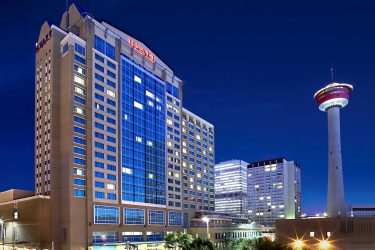2021 (percentage change from 2019)
Occupancy: 41.8 per cent (-35.7 per cent)
Average daily rate (ADR): CAD139.11 (-15.8 per cent)
Revenue per available room (RevPAR): CAD58.10 (-45.9 per cent)
In December specifically, Canada followed its typical seasonal trend with slightly lower performance than November, but the country did achieve better pre-pandemic comparisons: occupancy (-13.4 per cent to 42.6 per cent), ADR (-2.5 per cent to CAD149.85) and RevPAR (-15.5 per cent to CAD63.87).
“Despite a surge in COVID cases toward the latter half of December, hotels in Canada benefited from leisure demand during the holiday weeks,” said Laura Baxter, CoStar Group’s director of hospitality analytics for Canada. CoStar Group is the parent company of STR.
“While the holiday demand was expected, overall performance was also helped by a lift in group demand, which rose to 70 per cent of the 2019 comparable–the closest the metric has been to that marker since the pandemic began,” Baxter said. "When examining full-year performance, pent-up demand from the domestic market advanced performance over the summer, signaling the start of a much stronger second half of the year. Against the backdrop of fluctuating demand patterns, though, hoteliers focused on what was within their control, which was how rates became the success story of the year. By Q4, monthly room rates reached 90-99 per cent of 2019 levels. Weekend rates were particularly strong, surpassing pre-pandemic levels in November and December, while weekday rates were not too far behind with only 5-10 percentage points to go.”
Among the provinces and territories, British Columbia recorded the highest 2021 occupancy level (48.5 per cent), which was 30.4 per cent below the pre-pandemic comparable.
Among the major markets, Vancouver saw the highest occupancy (47.9 per cent), which was a 39.8 per cent decline from 2019.
The lowest yearly occupancy among provinces was reported in New Brunswick (35.1 per cent), down 41.1 per cent against 2019. At the market-level, the lowest occupancy was reported in Montreal (-53.7 per cent to 33.1 per cent).
“Performance still has a way to go, and the rise in COVID-19 cases related to the omicron variant has not allowed hotels to start off the new year on the right track. In 2021, we saw a clear, inverted trend between cases, hospitalizations and performance. When public health conditions improved, the recovery picked up pace and vice versa. During the first two weeks of this month, occupancy fell to the 30 per cent range–the lowest levels since June 2021. With case numbers falling, we expect a more positive performance picture over the coming weeks.
(SOURCE: str.com and costargroup.com.)






